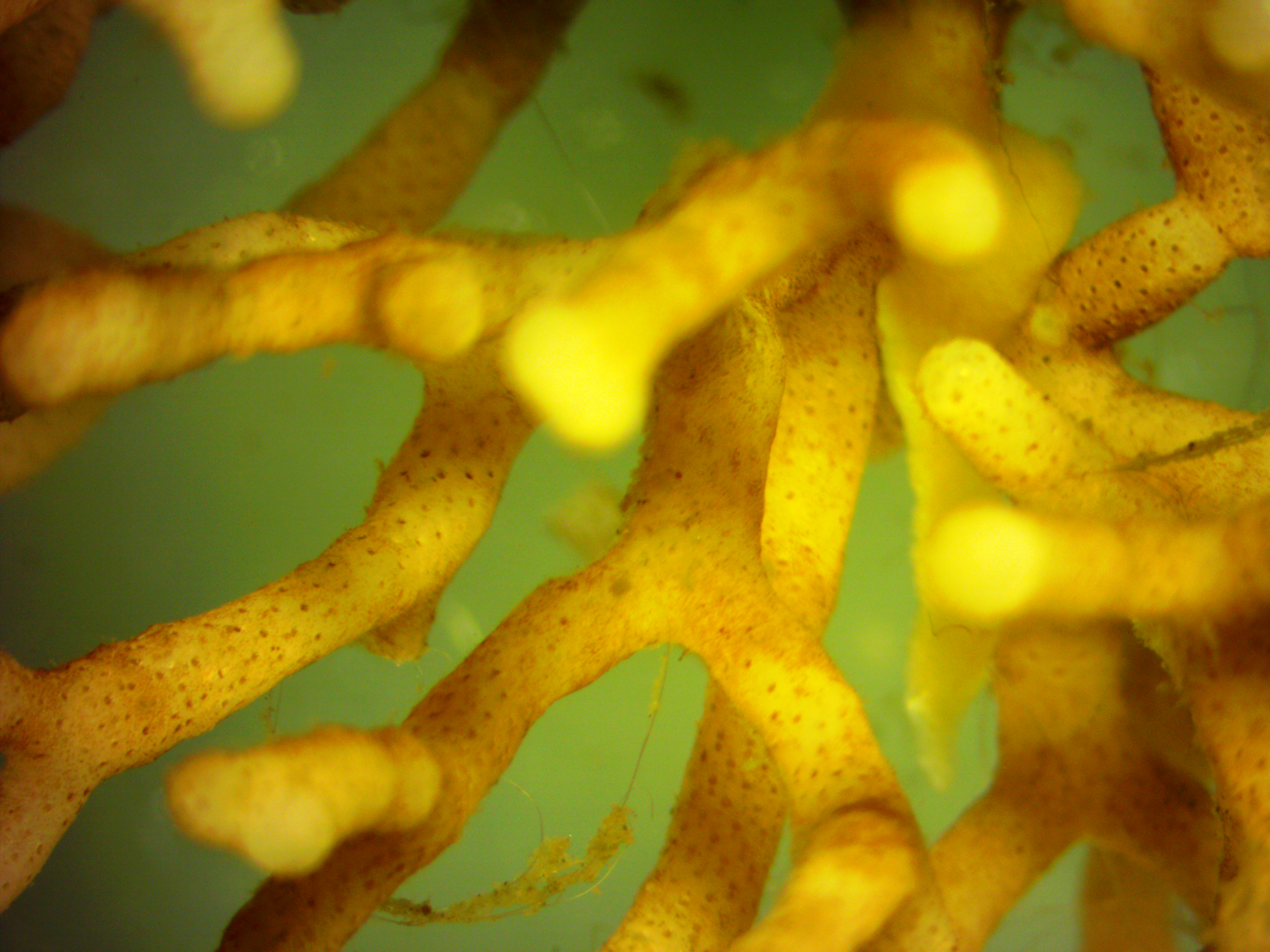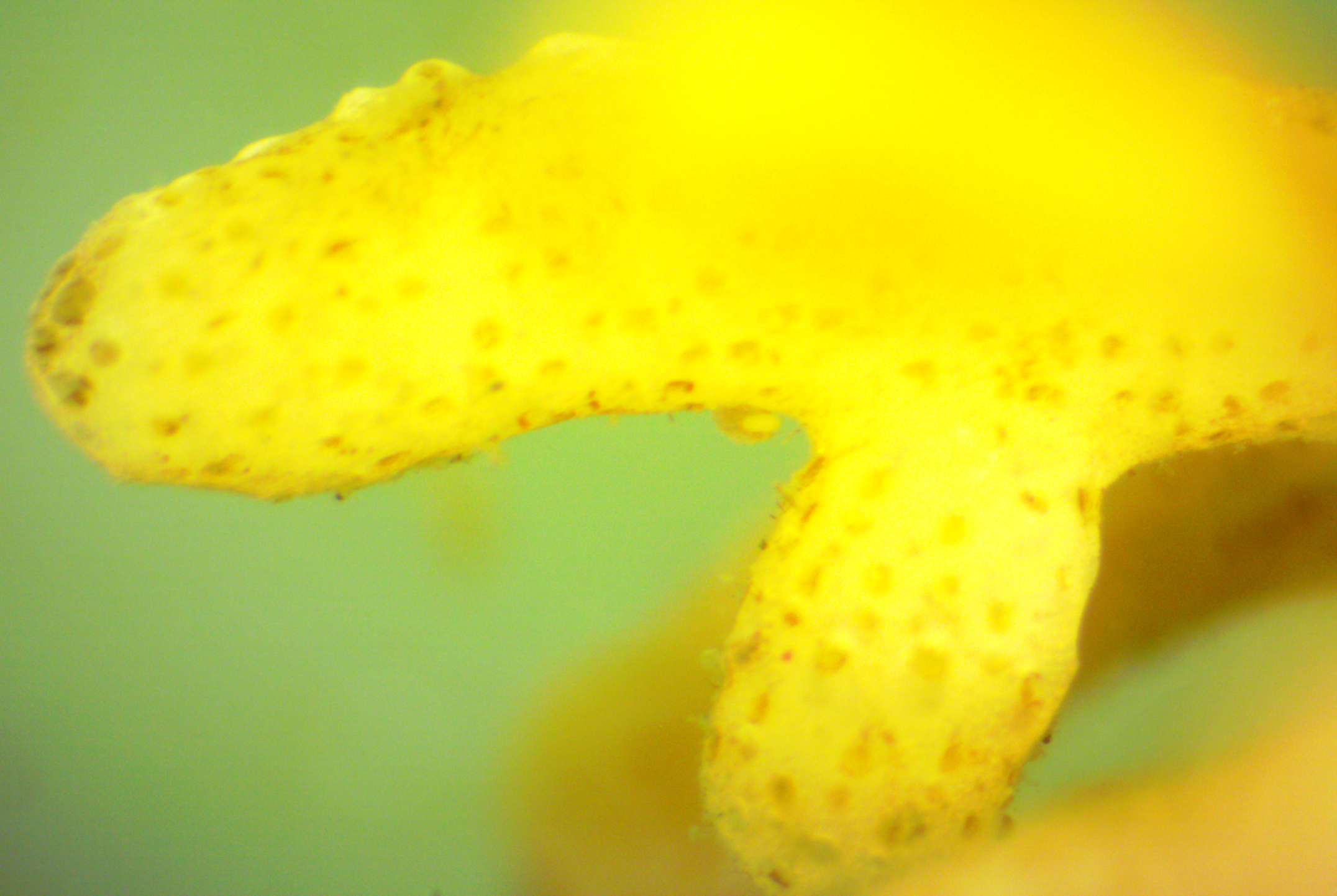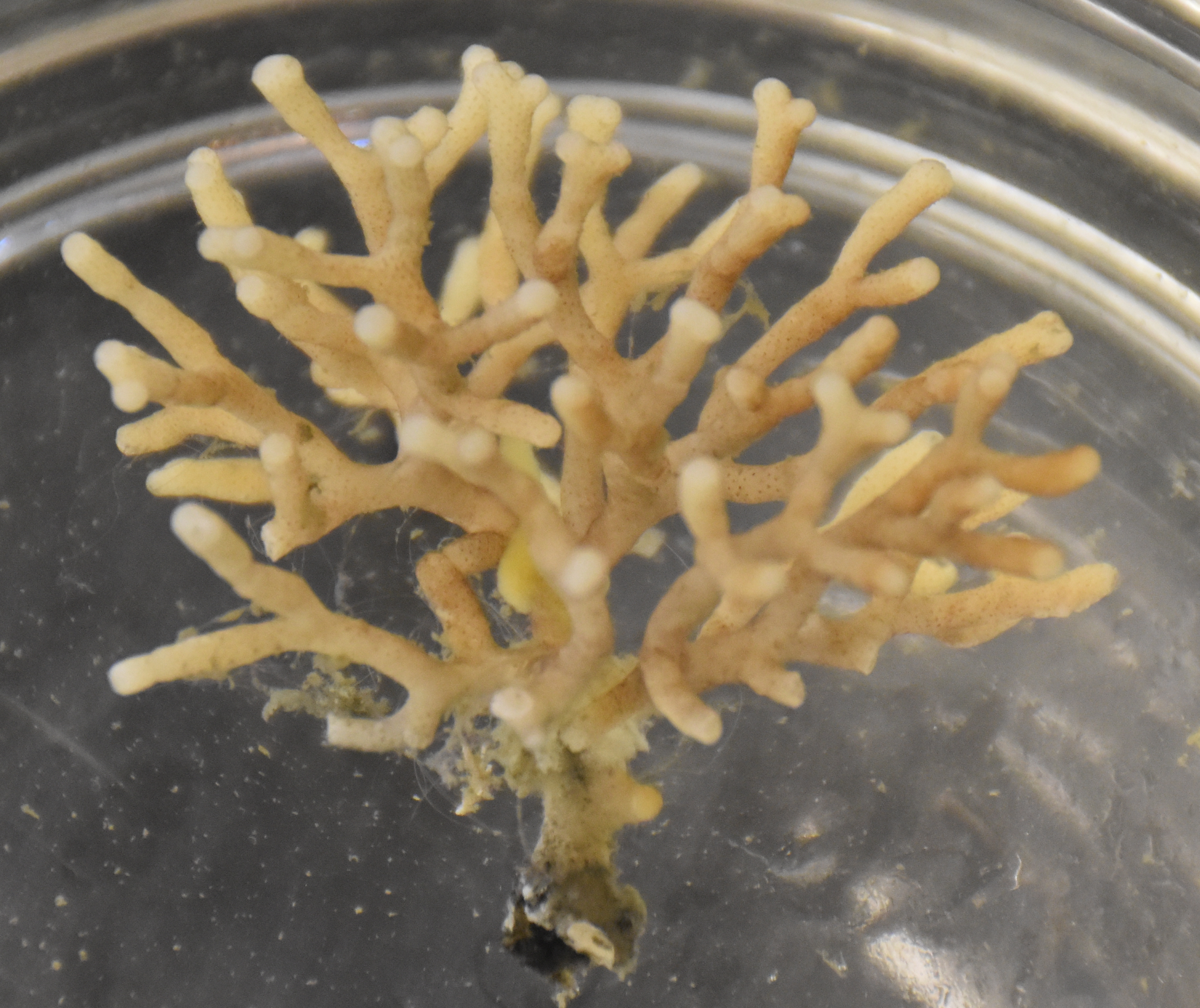Description: As with other members of Class Stenolaemata, the zooids of this species live in narrow, cylindrical , calcified tubes. All living members of Class Stenolaemata are also in Cyclostomata. Heteropora alaskensis forms an erect, calcified, branching bushlike colony with cylindrical branches. The apertures of the individual zooecia are round and distributed around all sides of the branches, which are only around 1-2 mm wide. The boundaries between the individual zooids are not apparent from an outside view. The zooecia have no operculum nor avicularia. Yellowish-white, with increasing bright white or yellow near the branch tips.
How to Distinguish from Similar Species:Heteropora magna is purple and H. pacifica is gray with pinkish tips; both have thicker branches up to 5 mm thick.
Geographical Range: British Columbia to Oregon
Depth Range:
Habitat:
Biology/Natural
History: The colony
is itself a clone, and the individual female zooids
of the colony also produce larvae that are clones of her fertilized egg
rather than being genetically different from each other.
| Return to: | |||
| Main Page | Alphabetic Index | Systematic Index | Glossary |
References:
Dichotomous Keys:Kozloff, 1987, 1996
General References:
Lamb
and Hanby, 2005
Scientific Articles:
Web sites:
General Notes and Observations: Locations, abundances, unusual behaviors:

The individual openings to the zooecia,
without opercula,
are visible in this closer view of another individual. An individual zooid
lives in each chamber but they are connected by tissue with each other.
Note that it is not readily apparent from the outside exactly where the
boundary between adjacent zooids
is. Photo by Dave Cowles, July 2024

The zooecia
openings
are more apparent in this even closer view. Several branches, some of
which
are out of focus, cluster close together. Photo by Dave Cowles, July
2024.
Authors and Editors
of Page:
Dave Cowles (2024): Created original page
CSS coding for page developed by Jonathan Cowles
Salish Sea Invertebrates web site provided courtesy of Walla
Walla University
